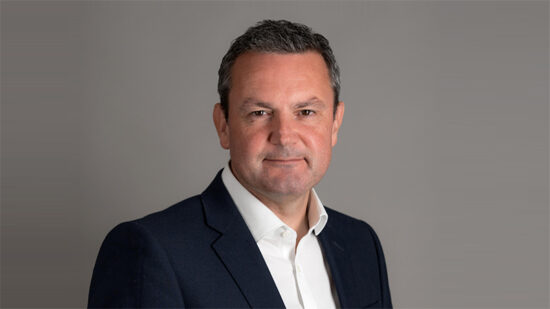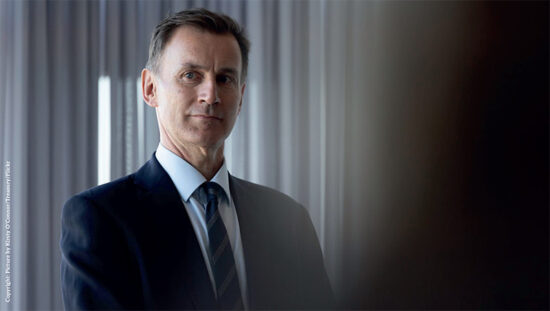The Bank of England Monetary Policy Committee (MPC) has raised interest rates another 50bps to 3.5% – a fresh high last seen in October 2008.
Though the decision was widely expected, the MPC was not tempted to further soften the increase despite inflation falling to 10.7% in the 12 months to November.
MPC members voted 6-3 in favour of the rise, with two members voting to keep the rate at 3%. One committee member favoured another 75bps hike.
The rise marks the ninth consecutive rate increase since the BoE started its hiking cycle in December 2021. However, the latest decision represents an easing, after the central bank delivered its largest single rise in 33 years at the last meeting in November.
It follows on from the Fed’s decision on Wednesday 14 December to end its four-strong streak of 75bps raises, slowing slightly to a 50bps increase.
Marcus Brookes, chief investment officer at Quilter, said: “Despite it being widely acknowledged that the UK is in recession, the BoE has today delivered another interest rate rise as it seeks to tame the inflationary beast. For now, the 75bps rise in November looks to have been a one off.
“The good news for households and the economy is that it looks like inflation may have peaked, if this week’s stats are anything to judge by. This does not mean the end of the rate hikes though, and just like the Federal Reserve over in America, the BoE will keep hiking until it is sure inflation is on a sustained downward trajectory.”
He added: “However, with the political shenanigans seemingly over for now and the market a lot more stable than it was at the last decision, investors will start looking to the future and signs of a pause in the hiking cycle and, potentially, even look at when rates might even be cut in order to stimulate economic growth. The robust jobs market is the only thing keeping the UK from entering a truly stagflationary environment, but how long this will hold remains to be seen. 2023 has not been primed as a bounce back year for the economy, so the BoE may need to act sooner than it may like.
“It is a tough balancing act, and the BoE will be hoping to learn a lot from the US given they appear a few months ahead of the UK in this battle against inflation.”
BoE in a tougher situation than global peers
While rising inflation has prompted rate increases for central banks across the globe, industry commentators believe the BoE is in a unique dilemma compared to its counterparts.
Seema Shah, chief global strategist at Principal Asset Management, said: “The BoE’s 50bps policy rate decision may have been in line with expectations, but the tightness of the labour market and resulting wage pressures argued for a larger hike.
“As the division within the MPC shows, the bank potentially has a tougher dilemma than any of the other major developed market central banks. Inflation is in double digits and while it may have peaked, constrained labour supply suggests that the UK inflation problem will be very persistent and requires aggressive action. At the same time though, the UK is facing a very difficult economic backdrop which is only exacerbated by the tightening in fiscal policy that is coming into play.”
Looking to future MPC decisions, Gam investment director Charles Hepworth said: “It is noticeable that there were split views among the committee… This helps explain sterling’s weak reaction to the hike.
“With the accompanying statement noting that the employment market remains tight with continuing wage inflation pressures, this might seem as similarly hawkish as the Fed yesterday. However, with an increasingly discordant committee, future hikes at subsequent meetings might not seem as obvious even if ongoing inflationary pressures should continue to direct the Bank’s actions.”
The next decision on interest rates will be taken when the MPC meets on Thursday 2 February 2023.
Tricky balancing act for the US
The decision by the Bank of England to shift its rate hikes down a gear followed a similar move by the US Federal Reserve, which slowed its record-breaking rate hikes to 50bps on 14 December.
The policy rate now sits in the 4.25%-4.5% range, which is the highest since 2007.
Silvia Dall’Angelo, senior economist at Federated Hermes, said the move was chairman Jerome Powell “pushing back against markets extrapolating an imminent dovish pivot” and “stressing that the Fed has still work to do in its fight against inflation”.
The expectation is now that the policy rate will peak at 5.1% next year, which is 50bps higher that was being touted in September, Dall’Angelo added.
“Overall, it was a tricky balancing act. The Fed has now stated a clear action plan for the year ahead: it envisages two or three 25 basis point rate hikes in the first half of the year (to a peak of 5% or slightly above) and then rates on hold for the balance of the year. Yet risks of plans going havoc are pronounced.
“In particular, the recent outperformance of the US economy (and labour market) suggests that the Fed might need to do more over 2023 to cool the labour market and tame domestically generated inflationary pressures. On the other hand, while it looks limited right now, there is also a risk of overdoing it; the labour market can turn around quickly, dragging on consumption, growth and inflation,” she said.
Not everyone was so downbeat, however, with Edison Group executive director Neil Shah saying the Fed’s decision was “very welcome” and “the clearest indicator yet that inflation has stagnated and is indeed on its way down”.
“The announcement is also a welcome Christmas present for investors who could look to capitalise on a potential Santa Rally by rebalancing their portfolio as US stocks grow in value, the benefits of which could be felt into the New Year. While there is no guarantee this will be the case, it is evident that the economic outlook across both sides of the Atlantic is looking far less bleak,” said Shah.
The Fed “stuck to its guns”, according to Richard Carter, head of fixed interest research at Quilter Cheviot, “despite inflation coming in cooler than expected on Tuesday”.
“This brings to an end successive 75bps rate hikes and will buoy some investors who may see this as a signal of a corner turned in the fight against inflation. The Fed clearly has confidence in its aggressive stance and feels it is working but won’t want to let off the pedal yet. Markets may be thinking a soft landing will be achieved and that a pause or a pivot back to looser monetary conditions could soon return, but the Fed’s hawkishness won’t simply end on one piece of good news.
“Inflation may be heading back down, but it is still very much present in the system. Indeed, service inflation remains a concern and will become the next key metric to watch. Despite the positive news, there is still a great deal of uncertainty over the future of the economy and the direction of interest rates,” Carter added.








